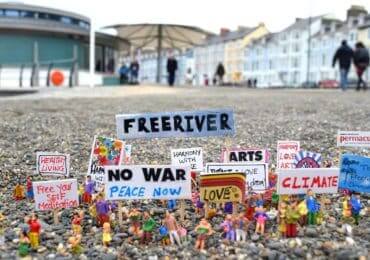The search for culpability for climate change has thus far proved elusive. It is often framed as a global problem but the reality is that the parties that are the biggest contributors to climate change are not necessarily the biggest victims of climate change – creating a complex situation when it comes to accepting responsibility.
Undoubtedly, progress has been made in recent years, and the Paris Agreement is an example of that, but environmental campaigners continue to be frustrated by the lack of decisive action – which is why many have brought it upon themselves to bring their case to court. The first was levelled by Greenpeace in Australia in 1994 and this legal avenue is one that is becoming more and more frequently explored.

Despite the legal campaign against global warming getting underway in 1994, it wasn’t for another 21 years that the first climate liability lawsuit would end in a victory. The landmark case waged by the environmental group Urgenda (on behalf of 886 Dutch citizens) in 2015 forced the Dutch government into cutting greenhouse emissions by 25% by 2020. By citing the EU’s precautionary principle as well as a UN climate secretariat article, Urgenda successfully convinced the judge that the Dutch government were guilty of negligence for knowingly contributing to a breach of the 2C maximum target.
Related: Importance of Environmental Education
In the wake of this decision, a multitude of people seemed to take confidence from the Urgenda result and began a legal assault of their own in their own countries. Nowhere was this knock-on effect more prominent than in the US. Of the 894 cases that have been filed to date in 24 countries, an overwhelming majority of them (73%) have been filed in the US. The latest of which – the Juliana case – invokes the ‘public trust doctrine’ instead of actual environmental law, in the hope that the US government will acknowledge that it has a responsibility to preserve the country’s natural resources.

Unlike the US Juliana case, where there are substantial doubts over whether the plaintiffs have or will suffer injuries that can be traced directly to government action (or inaction) on climate change, in the Children v Governments of Europe & Climate Change, the ties between climate change and their afflictions are obvious. The plaintiffs are all victims of the wildfire that rampaged through the Pedrógão Grande region of Portugal earlier this year – one of the most devastating climate change-related disasters of recent memory.
Related : Strategic Environmental Assessment
The future of the frequency of climate change in the courtroom is clear – they are set to increase in number all over the world. What is unclear is whether these climate change cases will prove successful or not. Regardless of whether the world’s governments accept accountability for arresting our slide towards environmental deterioration/ or not, it is most important to focus on the things you can control, like your own carbon emissions. One simple and inexpensive way of doing this is to install a heating pump for your home that is able to maximise efficiency – reducing running costs as well as the impact on the environment.